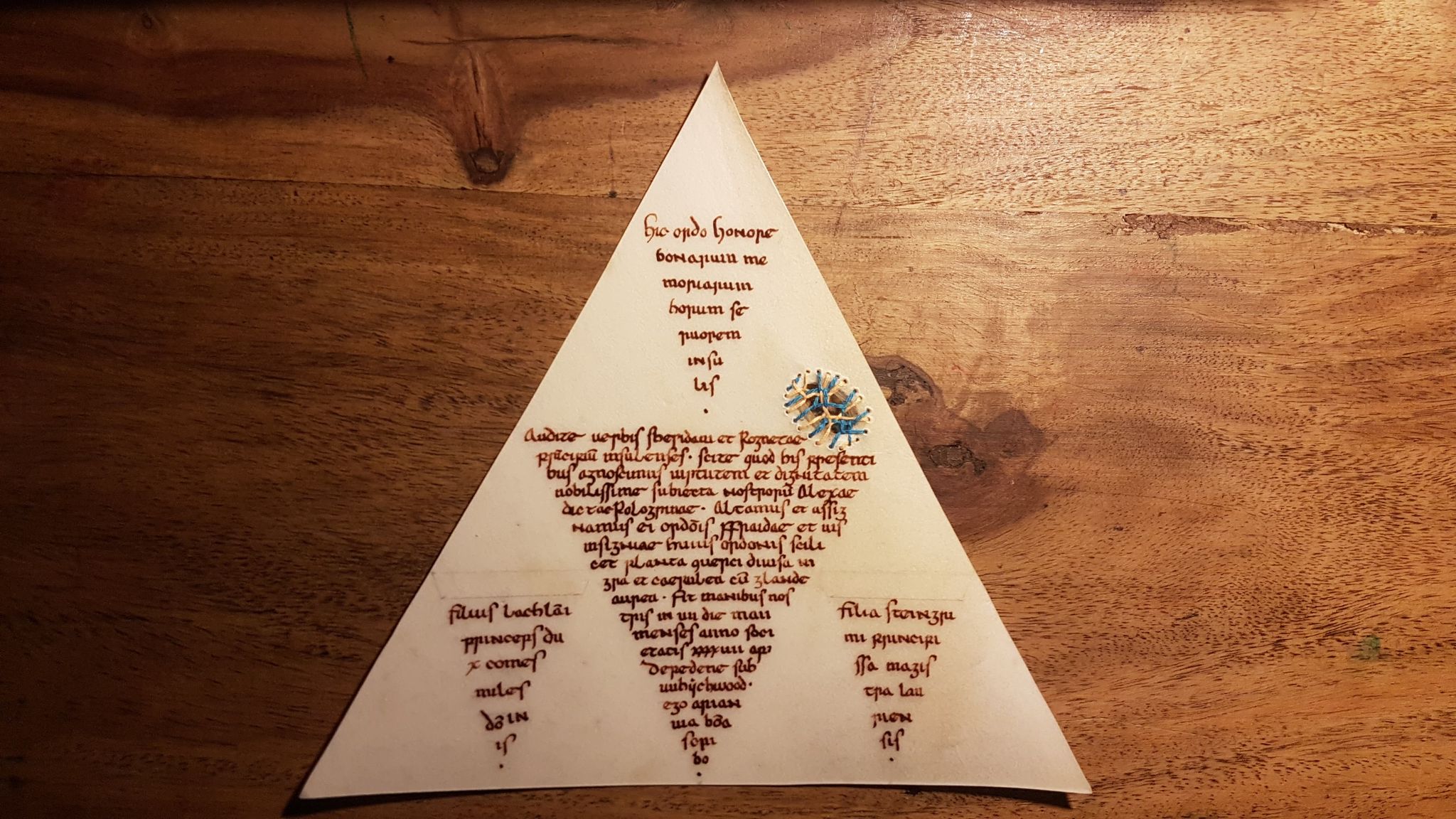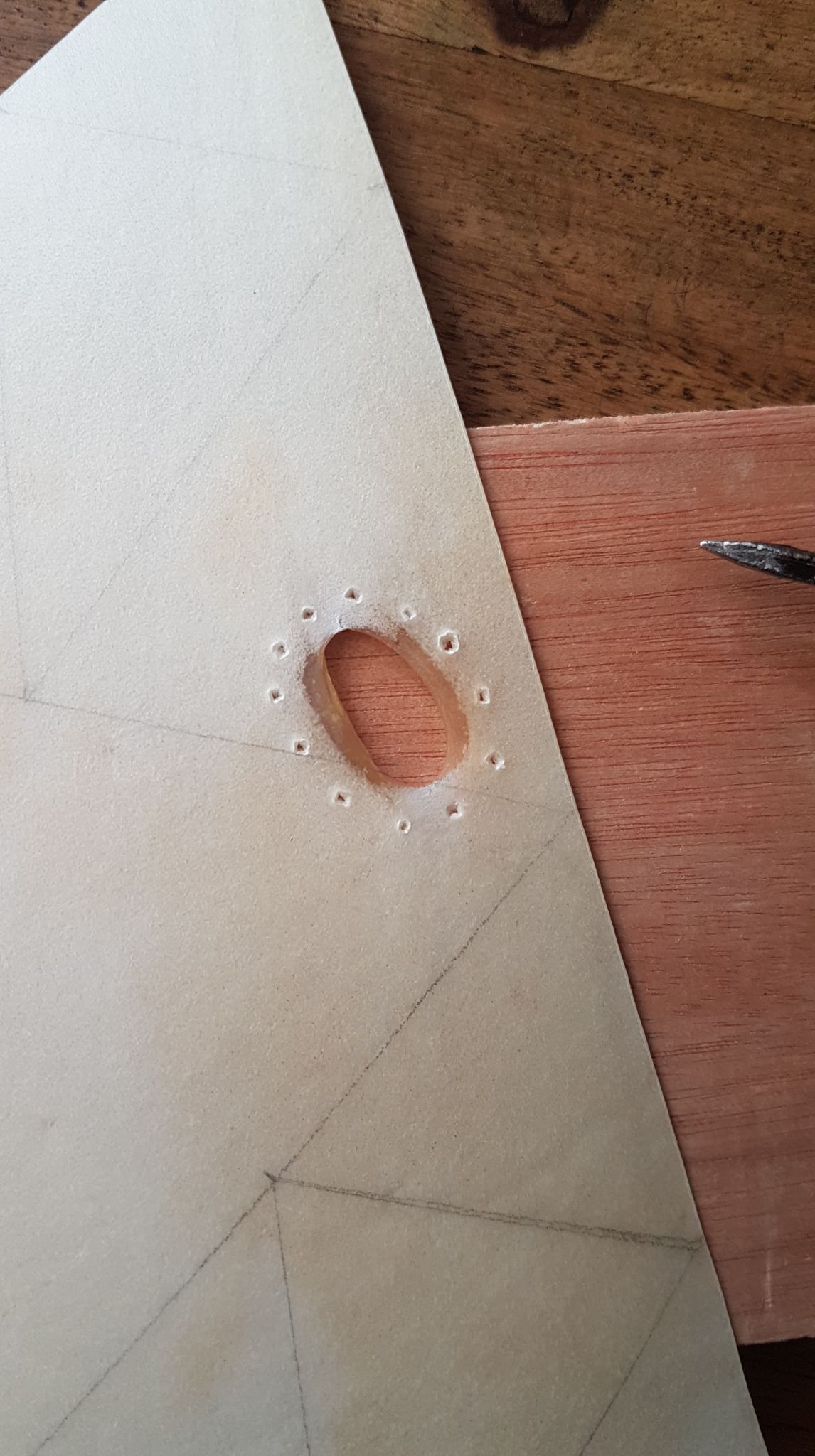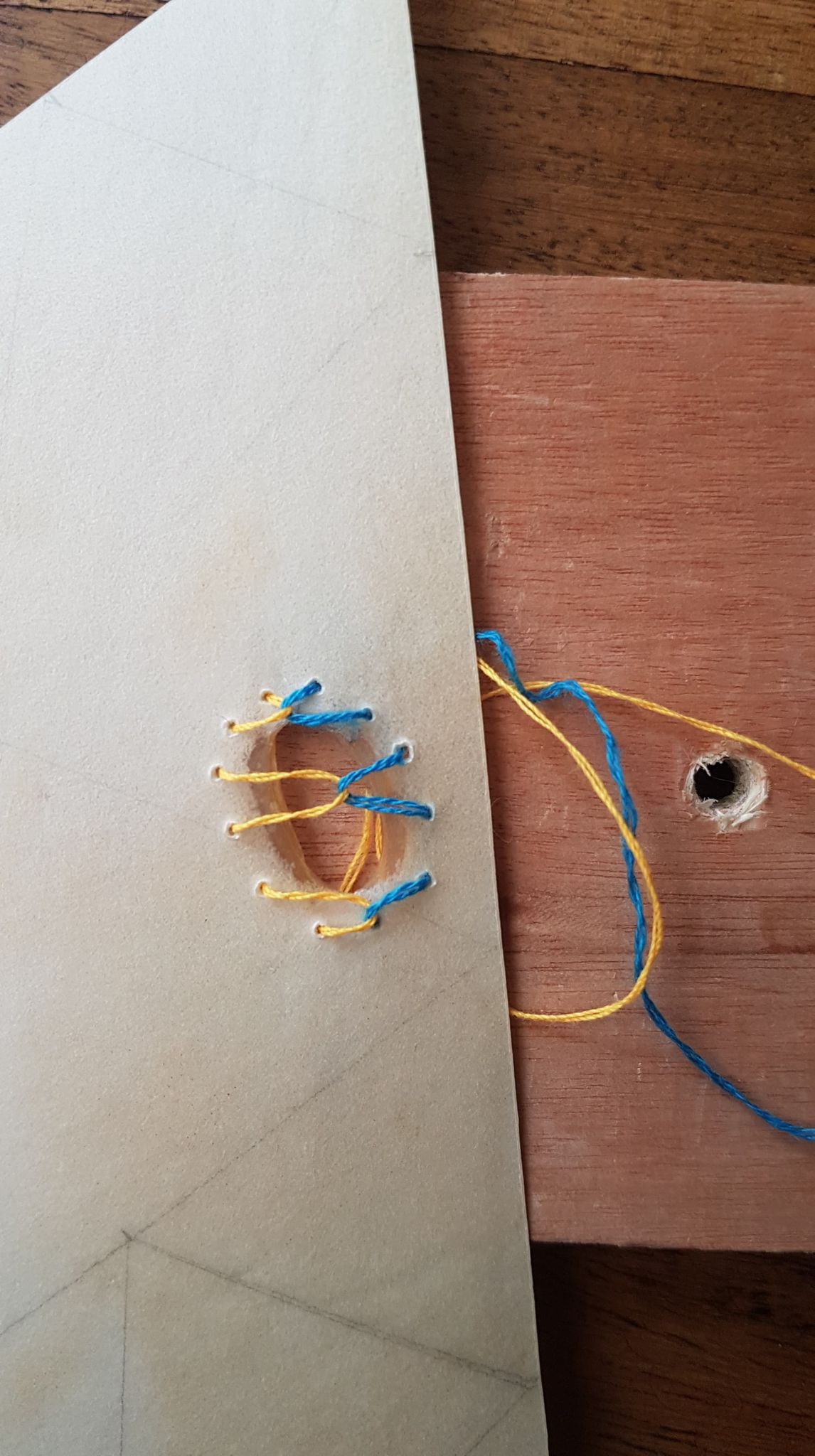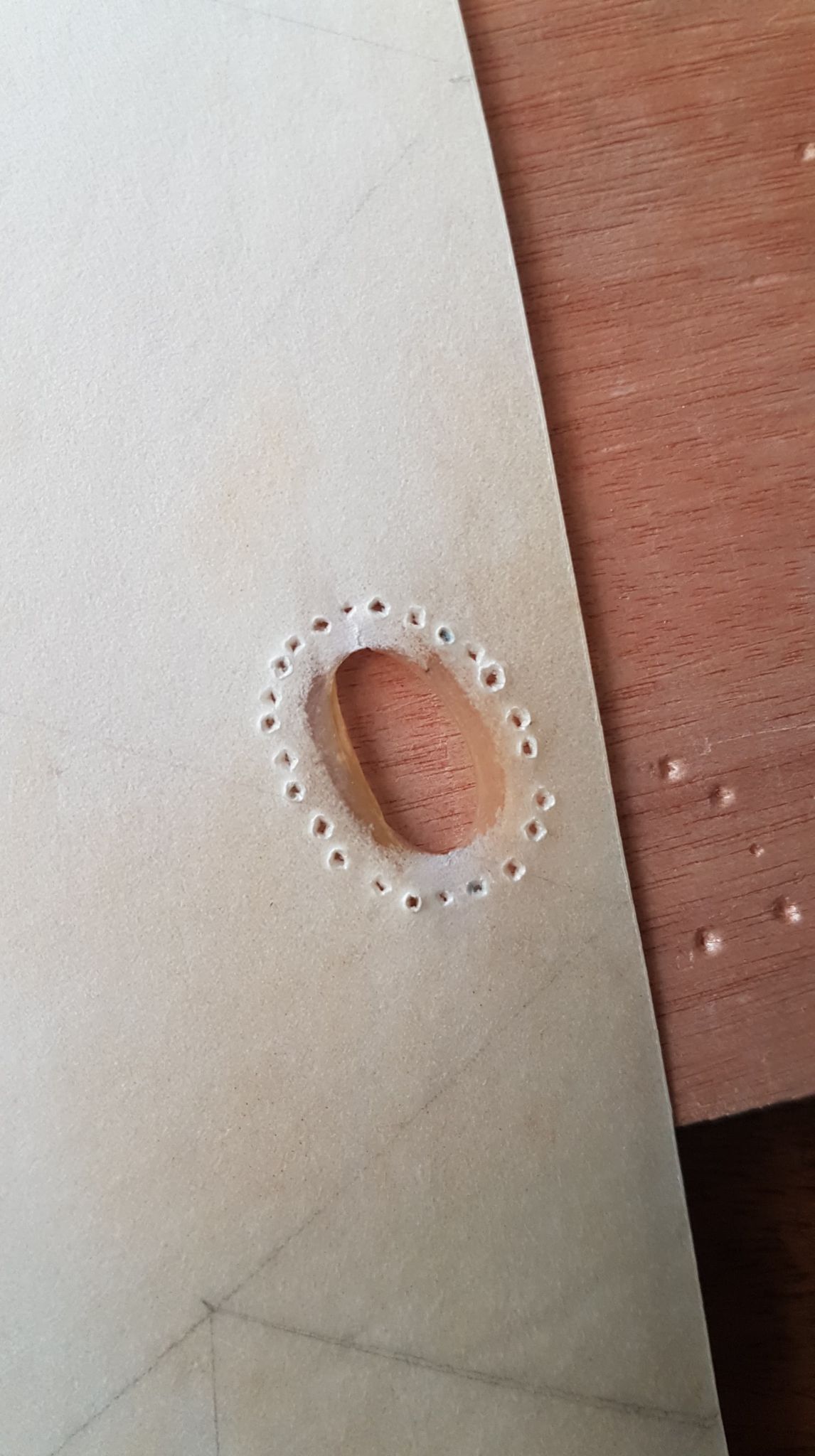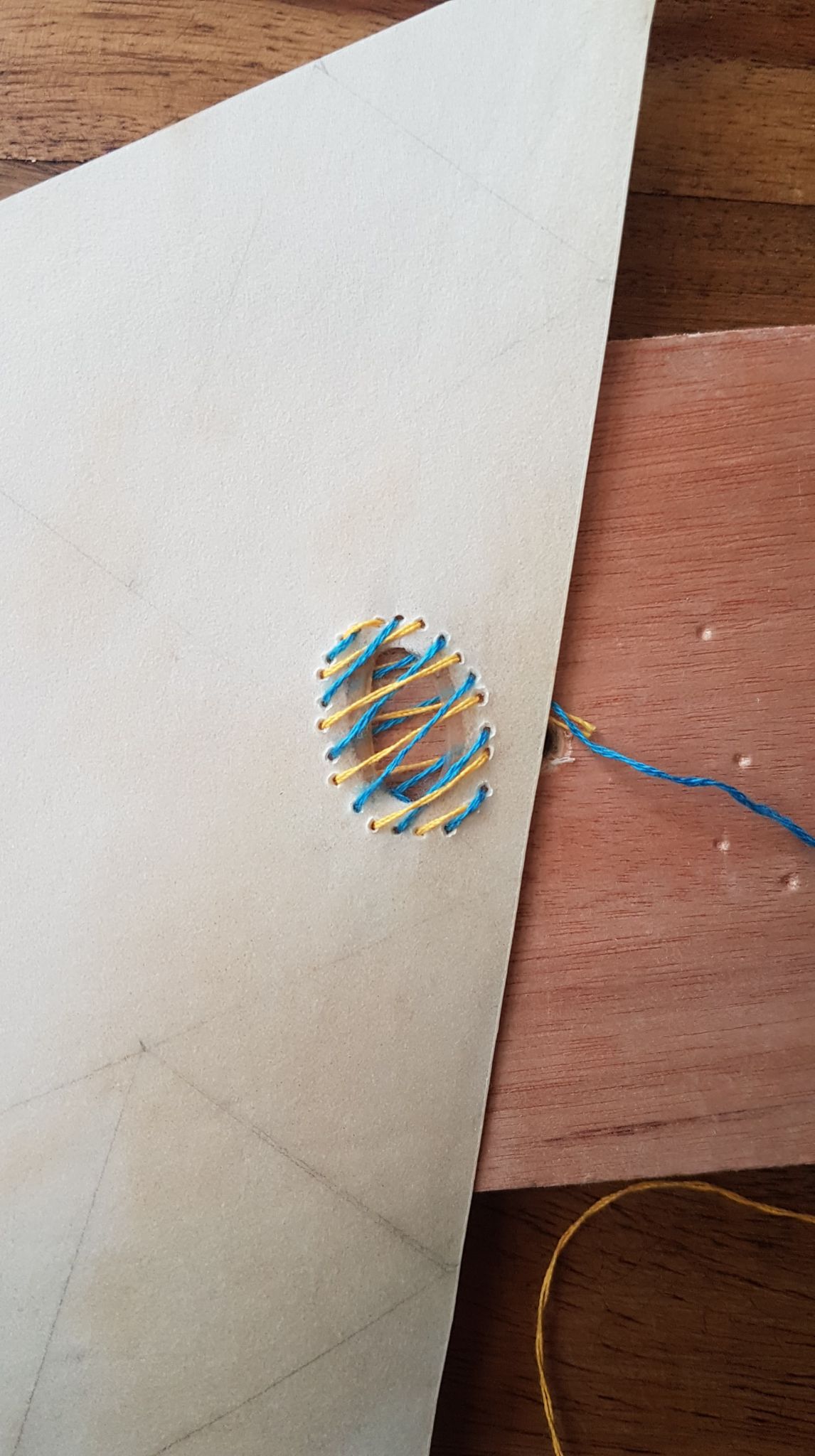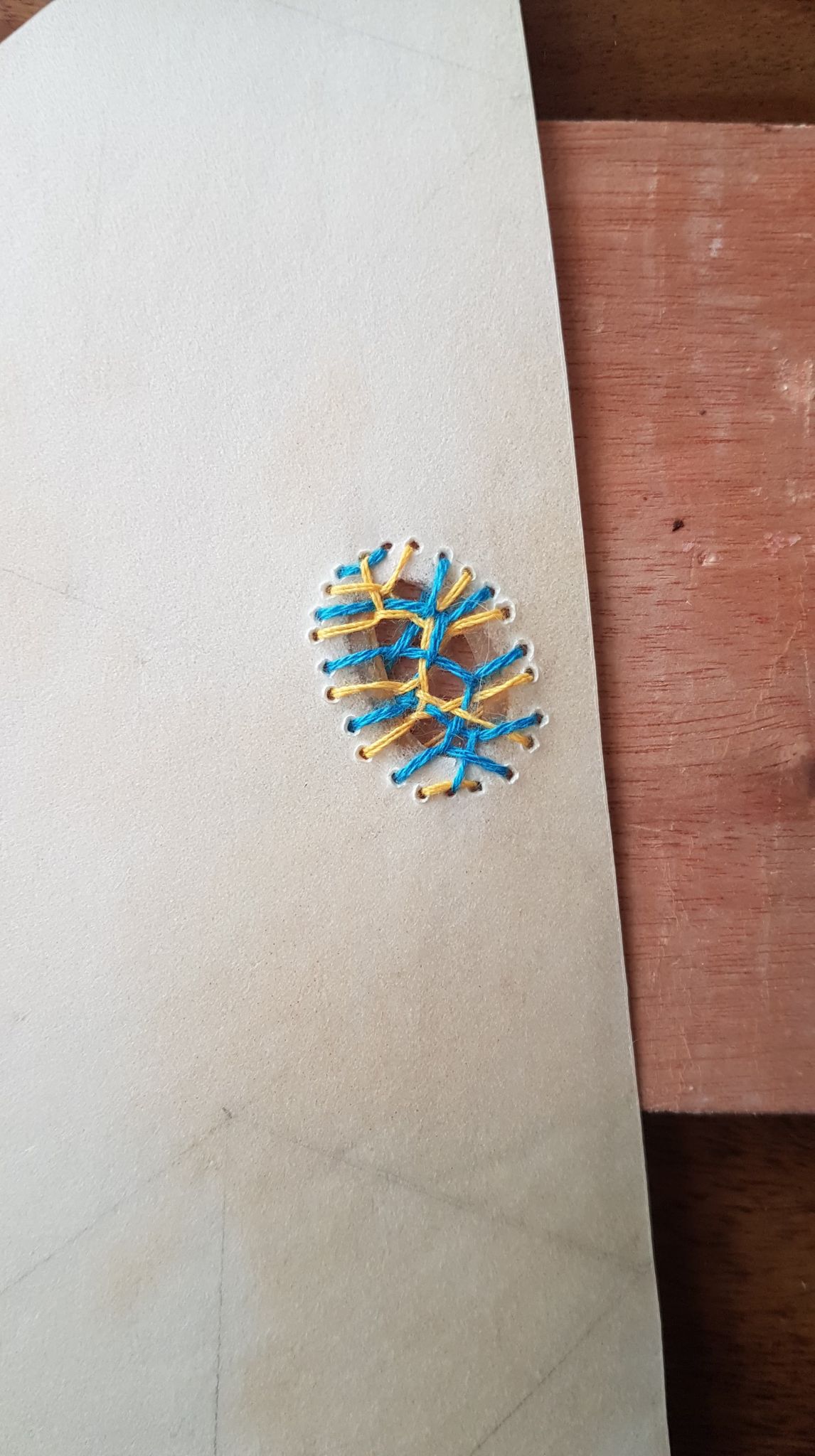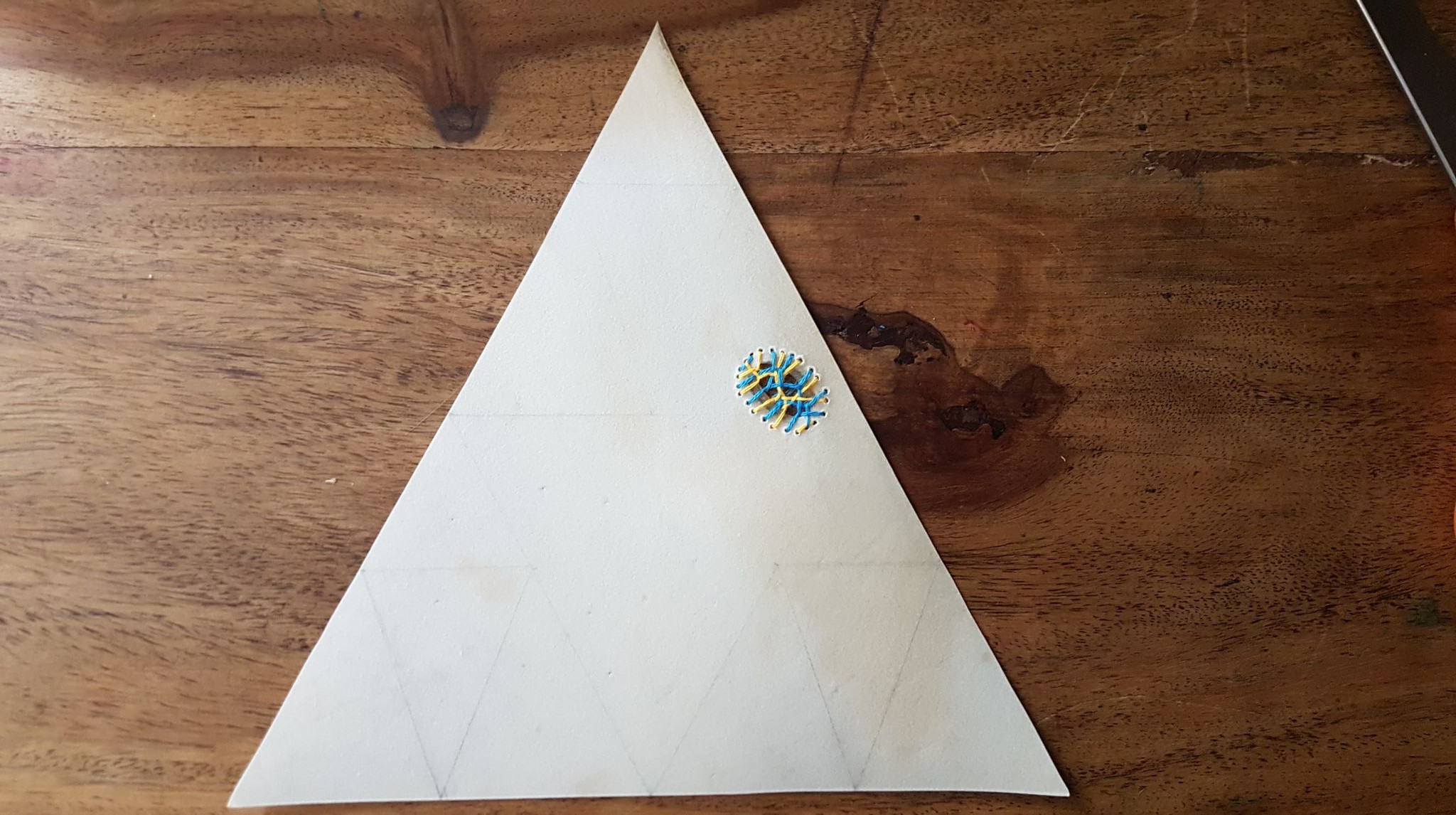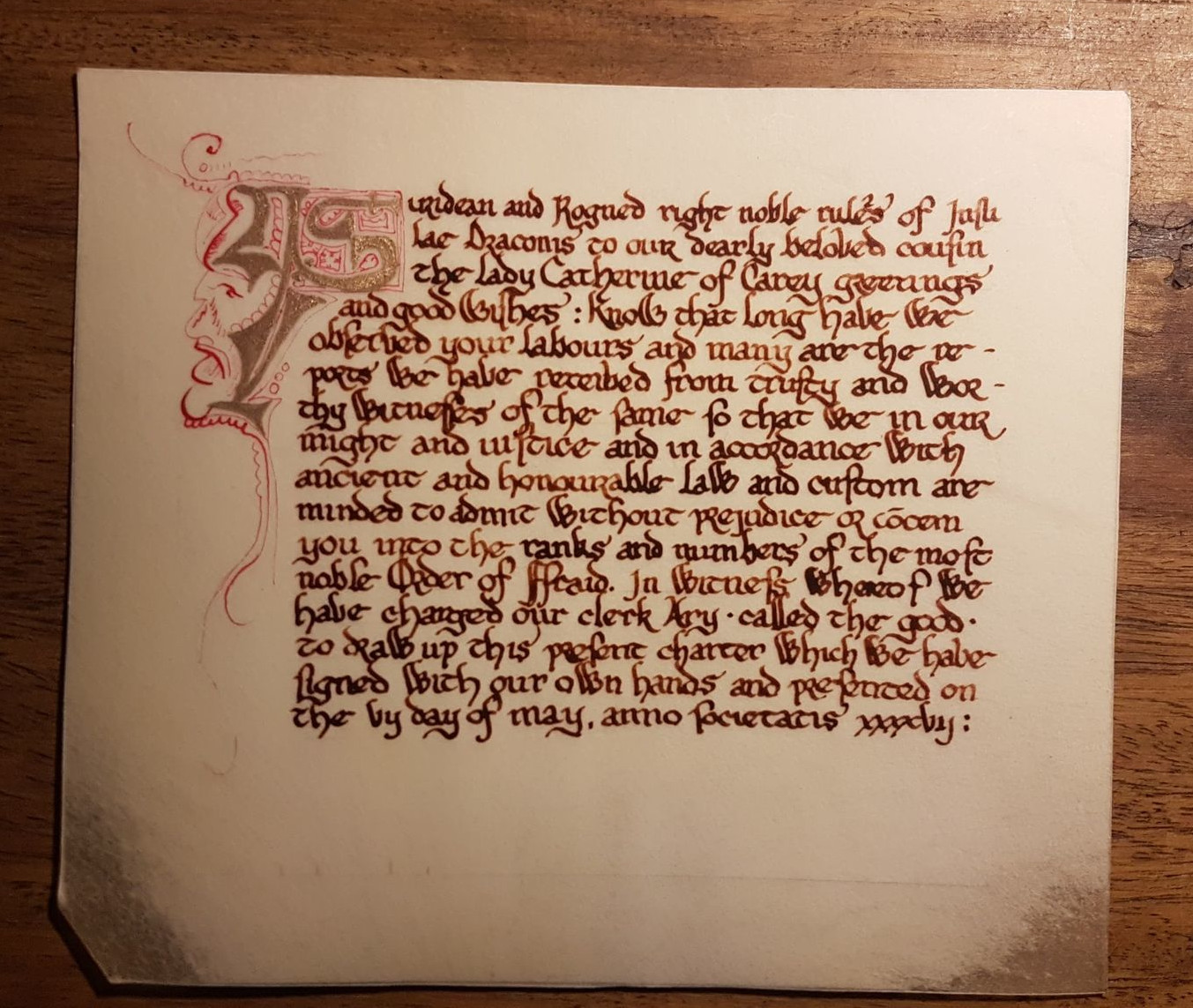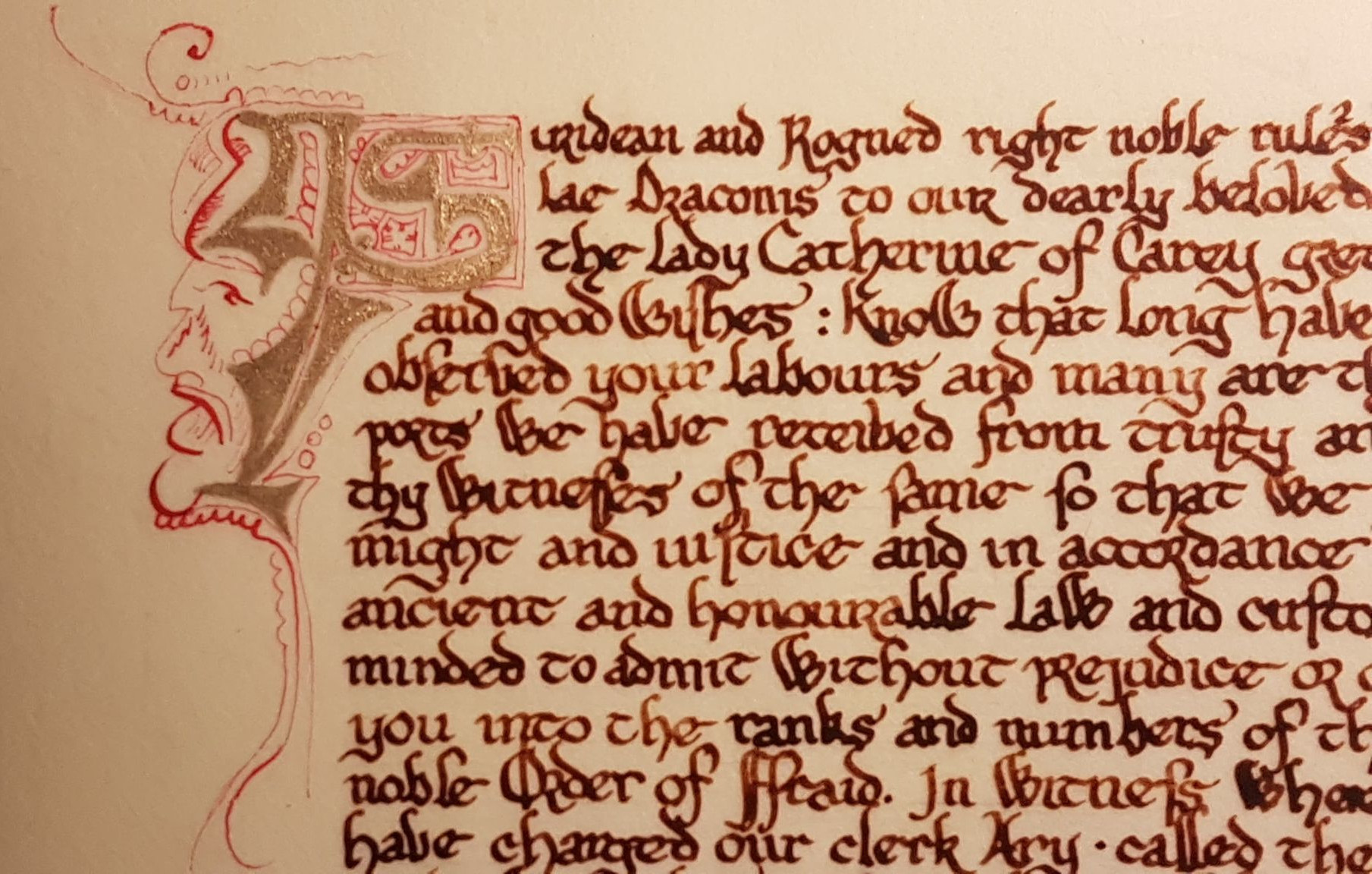I've got a bunch of vellum offcuts, of really lovely quality but of varying size and shape. One was large enough that I could've gotten a good-sized rectangle out of it, except it had a great big hole in it. Then I remembered that I've had a blog post by Brandon Hawk on Dealing with Holes in a Medieval Manuscript saved for the last 4.5 years, and maybe I should go and read it and get some inspiration.
The holes in these MSs have clearly been mended in a way to make them a feature of the overall page, and it occurred to me that I could try to do that.
I also realized the piece I had was an almost perfect triangle, if I trimmed it a bit, whereas reducing it to a rectangle would've lost a lot of area. So I did a bit of a search to determine whether there were any medieval triangular books (none that I could find) or text that was shaped in a triangle -- and that led me to a blog post by Thijs Porck on Triangular Texts in Three Manuscripts From Early Medieval England. I decided to throw authenticity to the wind (a bit) and go with a triangular text on a triangle, but once I'd already thrown a little bit of authenticity to the wind I decided to throw ALL of it and go with a Sierpinski triangle text format. So the result isn't really period. I don't care, it looks cool, and it incorporates medieval elements!
I mended the hole first, and it was an interesting experience. It was clear I could not puncture the vellum with my sharp modern sewing needle, so Simon offered me a range of awls. I tested the first one -- a birdcage awl -- out on the bit of vellum I'd trimmed off, and it worked beautifully. So I put in a round of holes and threaded my needle (with cotton embroidery floss because I didn't have silk in the ID colors and wool is not allowed in our house due to wool moths), and started experimenting. The medieval examples are clearly very intricate; but the image resultions were such that it was very hard to figure out how they were done. So I tried one criss-crossing attempt, and realized: I need more holes. So I doubled the number and tried again and got something that was...meh. So I unpicked it all and tried a third time and got something with a complicated weaving structure that looked cool and decided to go with it!
Next, the text. The main text reads:
Audite verbis Sheridani et Rogentae principorum insulenses. Scite quod his presentibus agnoscimus virtutem et dignitatem nobilissime subjectae nostrorum Alexae dictae Pologrinae. Altamus et assignamus ei ordonis Ffraidae et ius insiginae huius ordonis scilicet planta querci diuisa nigra et caerulea cum glande aurea. Fit manibus nostris in vii die maii menses anno societatis xxxxvii apud Depedene sub Wychewood. Ego Arianuia bona scribo
And in translation:
Pay heed to the words of Siridean and Rogned, insular princes. Know that by these presents we recognize the worth and dignity of our most noble subject Alexa called Pologrina. We raise her to the Order of Ffraid and grant to her all rights to the insignia of this order namely, an oak sprig divided black and blue with a golden acorn. Done by our hands on the vii day of Maian month, in the year of the society xxxxvii at Depedene under Wychwood. I, Ary Bona, write [this].
The smaller triangles, from top, to left, to right, read:
(1) Hic ordo honore bonarum memoriarum horum seruorem insulis. (2) filius Lachlani princeps dux comes miles dominus. (3) fila Steingrimi principissa magistra lauriensis.
And in translation:
(1) This order in honor of the good memories of those who have served the isles. (2) son of Lachlan, prince, duke, count, knight, lord. (3) daughter of Steingrim princess, laureate mistress.
The hand is my attempt at an insular miniscule; for the central triangle, I didn't get the interline spacing right; it's better in the three smaller ones. But I am very pleased that in both cases I ended up with texts that were exactly the right length, even though I was making them up in Latin on the fly.
The end result is quite cool, if I do say so myself.
© 2022, Sara L. Uckelman.
